AI generated image
The Museum of Ennigaldi-Nanna, dating back to around 530 BC, is considered the world’s first known museum. Located in Ur (modern-day Iraq), it was was established by Princess Ennigaldi, the daughter of the Babylonian King Nabonidus, and it displayed artefacts from earlier Mesopotamian civilisations. What makes it remarkable for such an early period is that the items were labelled with descriptions in three languages. The museum was discovered in 1925 by the British archaeologist Sir Leonard Woolley during excavations in the area.
What we now recognise as modern museums began to emerge in 17th- and 18th-century Europe. Initially, they took the form of private collections owned by wealthy aristocrats – known as “cabinets of curiosities”- before gradually evolving into public institutions dedicated to education and preservation. The Ashmolean Museum in Oxford, UK, is widely regarded as the first modern public museum, established in 1683 after Elias Ashmole donated his private collection to the University of Oxford. Open to the public and designed for learning, it represented a major shift from earlier privately held collections.
The prestigious British Museum was founded in London in 1753 by an Act of Parliament, built largely on the collections of the physician Sir Hans Sloane. It opened its doors to the public in 1759, setting a benchmark for museums to come. Not long after, Paris’s Louvre Museum followed suit in 1793, repurposing a royal palace into a public treasure house in the wake of the French Revolution. Both institutions embodied the Enlightenment’s core belief: that great art and artefacts should be preserved, curated, and – above all – shared with the world.
Yet with museums came a new challenge: keeping their treasures safe. These weren’t just displays – many were priceless artefacts and masterpieces worth millions. The first museum theft on record isn’t precisely documented, but among the earliest known cases, one dates back to the 19th century – by which time museums had already become established public institutions.

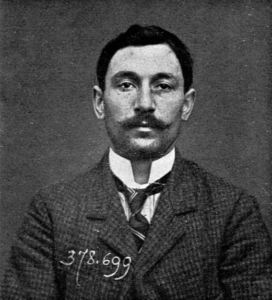
While not the first museum theft, the 1911 disappearance of Da Vinci’s Mona Lisa from the Louvre marked the first truly sensational art heist. The culprit was Vincenzo Peruggia, an Italian handyman convinced the masterpiece belonged in Italy. After hiding overnight in the museum, he simply walked out with the painting tucked under his coat. Though recovered two years later in Florence—and returned to the Louvre, where it remains today—the theft stunned the world.
In 2002, professional thieves stole two Van Goghs (View of the Sea at Scheveningen and Congregation Leaving the Reformed Church in Nuenen) from Amsterdam’s Van Gogh Museum. The paintings resurfaced in 2016 during a Naples mafia probe. Even bolder was the 2010 raid on Paris’s Musée d’Art Moderne, where a single masked thief made off with five modern masterpieces by Picasso, Matisse, Braque, Modigliani, and Léger. Valued at €100 million, these works remain missing – one of modern art’s most devastating losses.
One of the largest art thefts in modern history took place in Germany in 2019. The Dresden Green Vault heist, targeting priceless 18th-century royal jewels, included a sword studded with 800 diamonds and was valued at over €100 million. Carried out by an organised gang, some of the stolen items were eventually recovered in 2022.
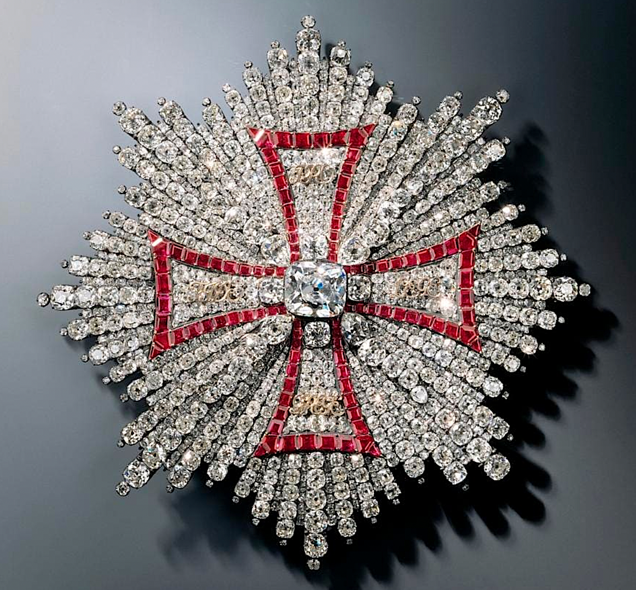
In 2023, the British Museum in London was rocked by scandal when it emerged that a staff member had stolen thousands of small artefacts – including gold jewellery and semi-precious stones. The theft exposed glaring security flaws in one of the world’s top cultural institutions, sending shock waves through the museum community. While some items have been recovered, hundreds remain missing as the investigation continues.
In a daring 1990 robbery at Boston’s Isabella Stewart Gardner Museum, thieves posing as police officers carried out what remains the most valuable art theft in history. They made off with thirteen priceless works, including Vermeer’s The Concert, works by Rembrandt, Degas and Manet – collectively valued at $500 million (€460 million). Not a single artwork has been recovered, but the museum continues to display the empty frames in their original locations.
In the early hours of the morning of 25 January 2025, thieves blasted their way into the Drents Museum in Assen, Netherlands, making off with priceless artefacts from Romania’s ancient Dacian civilisation. The explosive entry caused severe structural damage to the historic building. The stolen treasures include the legendary 2,500-year-old Coțofenești Golden Helmet and three gold bracelets from the same pre-Roman conquest era – collectively valued at €6 million. While Dutch police have arrested several suspects from North Holland and continue intensive recovery efforts, these irreplaceable cultural artefacts remain missing.
The incident has sparked outrage, with calls for intensified international cooperation to recover stolen cultural artefacts. These repeated thefts underscore the persistent challenges in protecting our shared heritage, highlighting the urgent need for enhanced security measures in museums and galleries throughout Europe.
On average, only 5 to10% of stolen artworks are ever recovered (Source: Interpol, which maintains a global stolen art database).
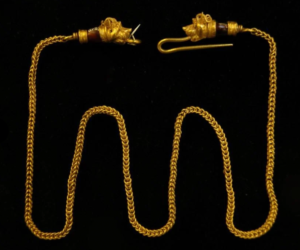
But why is the recovery rate so alarmingly low? The answer lies in the well-established routes thieves follow: Many pieces vanish swiftly into the hands of unscrupulous private collectors who deliberately avoid provenance checks. Stolen art is quietly sold on the black market or used as currency in criminal dealings, and there’s a growing platform on the Dark Web for discreetly advertising high-value cultural loot. With such shadowy distribution channels, masterpieces often disappear without a trace.
In some cases, thieves resort to destroying stolen items if they can’t be sold discreetly. Even when works survive, recovery grows exponentially harder once they cross borders – despite Interpol’s rapid response protocols. Legal complexities and jurisdictional barriers create near-insurmountable obstacles. Compounding the problem, many smaller artefacts lack proper documentation, making identification and restitution more difficult.
Unlike famous artworks – which are well-documented and instantly identifiable – jewellery presents far greater opportunities for criminals. Its compact size allows for easy concealment and cross-border smuggling, while precious metals and stones can be melted down or recut, effectively making them untraceable.
The anonymity of jewels makes them ideal for underground sales. Pawn shops, black markets, and online platforms provide ready outlets, unlike the scrutinised art world. Stolen royal jewellery, for instance, is so rarely recovered – pieces often disappear into workshops where they are rapidly stripped.
The 2008 Harry Winston heist in Paris remains one of history’s most brazen jewellery robberies. Disguised in wigs and women’s clothing, a gang stormed the luxury boutique during business hours, holding staff at gunpoint while they emptied display cases of €80 million worth of high-end jewels.
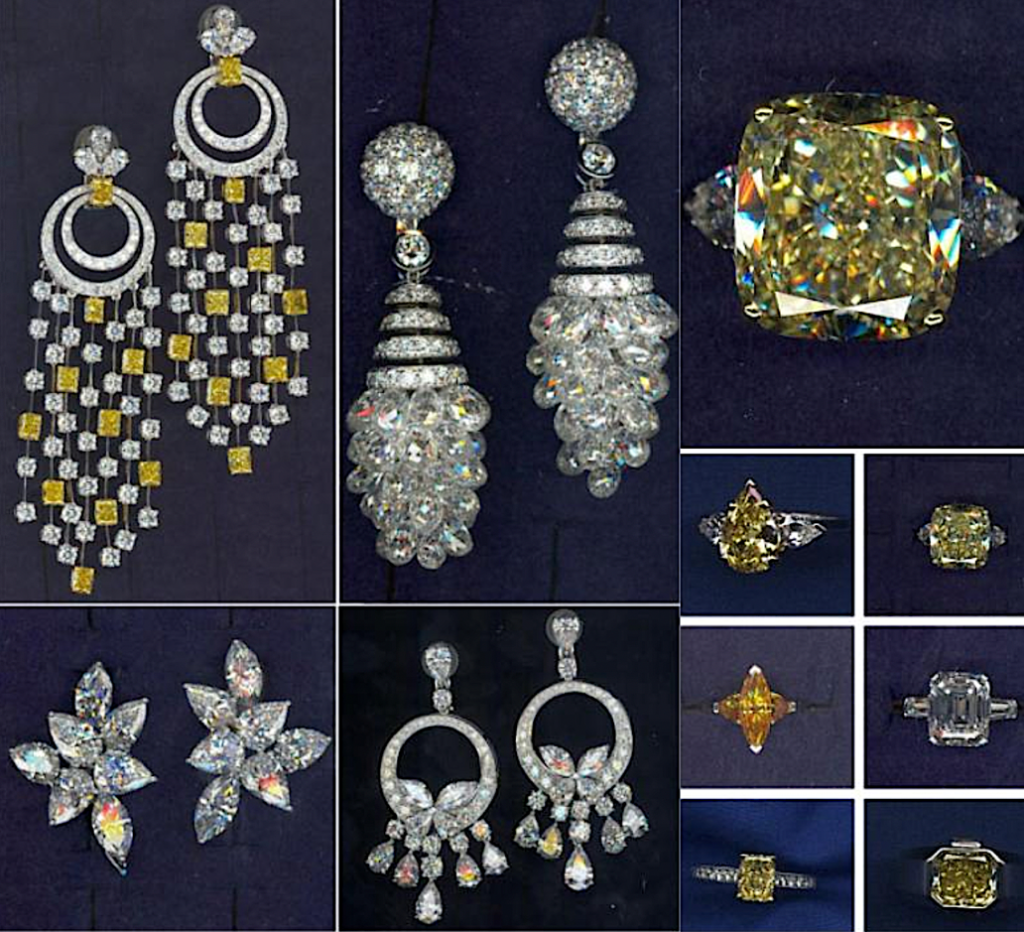
While authorities later recovered some items and apprehended several suspects, the clinical execution of this daring operation left a lasting impression.
Throughout history, certain jewellery heists have captured global attention through their audacity and meticulous planning. Among the most notorious was the 2003 Antwerp Diamond Heist, where thieves breached the high-security vault of Belgium’s Diamond Centre, escaping with diamonds, gold, and gems valued at over $100 million. Though the mastermind, Leonardo Notarbartolo, was apprehended, most of the stolen items remain missing. London’s 2015 Hatton Garden heist achieved similar notoriety when a gang of elderly men spent Easter weekend drilling through two metres of reinforced concrete to loot safety deposit boxes of jewels worth £14 million. Their improbable demographics and clinical execution inspired multiple film adaptations.
In France, the 2013 Carlton Hotel robbery saw a lone gunman stroll into a Cannes diamond exhibition and depart with €100 million in jewels—vanishing without trace in an unsolved case.

London’s Graff Diamonds robbery in 2009 demonstrated equal flair, with two theatrically disguised men stealing 43 pieces worth £40 million. Despite an elaborate escape plan, authorities eventually tracked them down. The 2008 Harry Winston heist in Paris remains one of history’s most brazen jewellery robberies. Disguised in wigs and women’s clothing, a gang stormed the luxury boutique during business hours, holding staff at gunpoint while they emptied display cases of €80 million worth of jewels. While authorities later recovered some items and apprehended several suspects, the operation’s clinical execution left a lasting impression.
These heists, each distinct in method and mystery, continue to captivate audiences and inspire Hollywood productions. The film industry has spawned numerous blockbusters based on elaborate theft plots, including The Thomas Crown Affair (1968 & 1999), Ocean’s Twelve (2004), The Pink Panther (2006), and The Louvre’s Secret (2005) – merely a handful among many such adaptations.
In the shadowy intersection where priceless treasures meet persistent criminal threats, contemporary museum security has transformed into an impenetrable fusion of cutting-edge technology, unwavering vigilance, and military-grade precision. Gone are the days of simple display cases and passive alarms; today’s cultural institutions rival maximum-security facilities in their protective measures.
Visible security forms just the first layer—biometric screening, access-controlled zones, and vault-like display cabinets protect sensitive areas. What visitors don’t see is the sophisticated infrastructure beneath: vibration sensors embedded in walls, pressure-sensitive floors, and glass that can withstand ballistic impact. The moment any protection is breached, silent alarms summon immediate response.
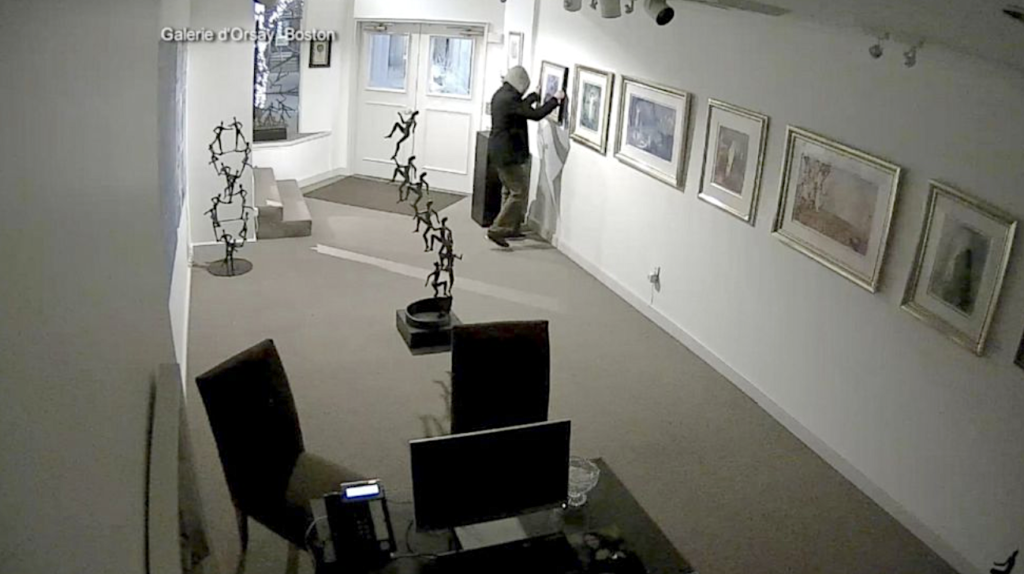
Round-the-clock surveillance operates through intelligent CCTV networks employing facial recognition, thermal imaging, and behavioural analysis. These feed live data to command centres where security experts monitor every movement. But technology alone isn’t enough. Museum staff undergo rigorous training in threat response, while specialist art protection officers – versed in both security protocols and art history – maintain constant patrols.
Each artefact receives individual risk assessment, with conservation-grade enclosures maintaining precise temperature, humidity and light levels to prevent environmental damage. Comprehensive documentation and custom insurance policies provide additional safeguards for these irreplaceable objects.
When prevention fails, international alliances spring into action. Museums collaborate with Interpol’s stolen art database, UNESCO’s heritage protection teams, and specialised art crime investigation units. Public participation is actively encouraged through anonymous tip lines and awareness campaigns.
Emerging technologies like AI-powered pattern recognition and autonomous drone surveillance promise even stronger defences. This relentless, often invisible battle protects more than physical objects – it safeguards humanity’s collective memory, ensuring future generations can learn from these cultural touchstones. In our modern museums, security has indeed become its own sophisticated discipline, as carefully crafted as the masterpieces it protects.
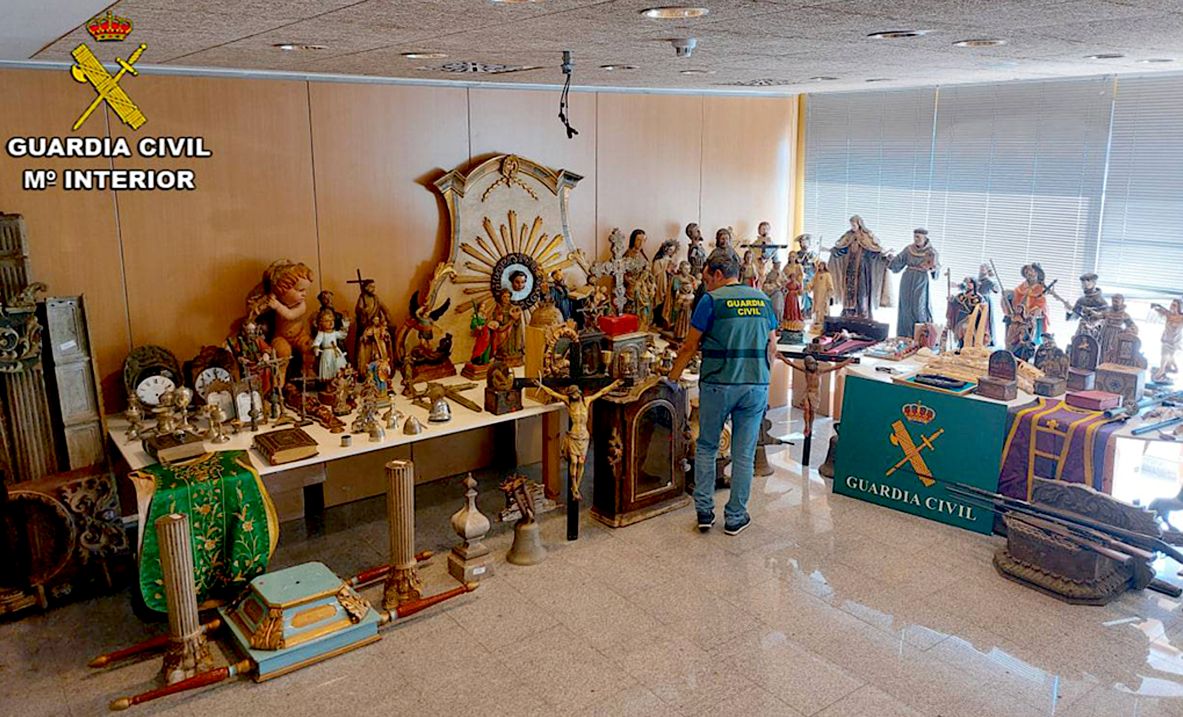
In May 2023, Interpol and Europol coordinated a major law enforcement operation targeting international art trafficking, resulting in 60 arrests and the recovery of more than 11,000 items © Interpol/Guardia Civil
There is now also another ongoing trend of lending artefacts between museums. It began in the 19th century, though the concept of exchanging or loaning cultural objects can be traced back even earlier in history. The practice has evolved over time, reflecting changing attitudes towards cultural exchanges, accessibility, security, and preservation of art and historical artefacts. In the 17th and 18th centuries, it was common for private collectors, aristocrats, and royal courts to exchange or loan works of art to public collections or other individuals. European monarchies, such as the Habsburgs or the French royal family, were particularly active in lending royal collections for display in other courts or for exhibitions.
After the establishment of public museums, access to art and culture became increasingly important, and institutions began organising temporary exhibitions to share their collections with the public. This laid the groundwork for lending artefacts for specific cultural events. One of the catalysts for formalised museum loan systems was the rise of world exhibitions, beginning with the Great Exhibition of 1851 in London and the Exposition Universelle of 1889 in Paris. These events provided an international stage for museums, governments, and private collectors to display their holdings, encouraging collaboration between national institutions and the loan of artefacts.
By the late 19th century, the practice had become more structured, with written agreements and protocols outlining the terms, conditions, and responsibilities of lenders and borrowers. Following the Second World War, cultural diplomacy gained prominence, with museums and governments using loans to foster international relations and promote cross-cultural understanding. Exhibitions of foreign art grew more frequent, serving as initiatives to advance peace and mutual appreciation between nations. Simultaneously, museums developed more sophisticated logistical frameworks, including specialised art transport, enhanced security measures, and refined insurance and loan contracts.

In April 1991, twenty of Vincent van Gogh’s masterpieces were stolen during transit at Amsterdam’s Schiphol Airport. The paintings – including The Potato Eaters and Wheatfield with Crows – were en route from the Van Gogh Museum to an exhibition in Italy. The theft was carried out by a group who intercepted the shipment, exploiting security vulnerabilities. Although the paintings were recovered within 24 hours (as the thieves struggled to sell such high-profile works and returned them anonymously), the incident underscored the ongoing risks to artworks during transport.
While the practice of lending artworks between museums is now well established and widespread, challenges persist – particularly concerning cultural property disputes and the repatriation of looted or contested pieces. Institutions have grown increasingly attentive to the ethical implications of loans, including questions of legal ownership and provenance.
Transporting priceless artefacts is more than a logistical challenge; it is a high-stakes ballet of precision, trust, and cutting-edge technology. Behind every successful loan lies a meticulously coordinated operation: custom-built crates, climate-controlled vehicles, GPS tracking, and specialist couriers who handle each object as the irreplaceable treasure it often is. From airtight legal agreements and condition reports to shock-absorbent packaging and 24/7 security arrangements, no detail is overlooked. Every stage of the journey is monitored, sealed, documented, and scrutinised to ensure these cultural treasures arrive precisely as they departed – untouched by time or the rigours of transit.
In this modern age, as technology increasingly dominates our lives and appears poised to govern them entirely, the museum experience endures. Lengthy queues, sold-out exhibitions, and highly publicised art events attest to their lasting appeal. Museums are successfully adapting to meet the evolving needs and expectations of new generations, delivering innovative, interactive exhibitions that both educate and inspire.
While museum thefts are relatively rare today, each incident serves as a stark reminder of our shared cultural heritage’s fragility. Every stolen artefact represents a loss not merely for an institution, but for humanity itself. Protecting these treasures demands constant vigilance, international collaboration, and sustained investment.
Ultimately, museums are more than repositories of the past – they are custodians of our collective history, guardians of cultural identity, and beacons of inspiration for generations to come.

